
Characteristics: Karachay horse, 12 years old.
Husbandary practise: born and bred on pasture probably up to 4-5 years in big herd of Karachay horses. Now also 24/7 on pasture, where there are fruit trees and in the fall there are falling apples, pears and plums. The owner does her best to pick the fruits so that the horse is not eating it too much.
Feeding: originaly fed with oat granules when owned by the riding club during past years and later rice bran added to the oat granules. From January to July 2020 muesli with rice bran about 2x a week. With the new owner remained in 24/7 regime. Hay all year round. In the summer grazing is possible as well but on limited amount of grass. She had a cough during two winters, in the winter of 2019 she had antibiotics. Since July 2020, rice bran has been omitted and only gets muesli. She used to spend winters without blanket but the new owner started to put blanket on and the mare started to be in better mod, plus remained in better physical condition in contrast with previous winters (she had tendency to lose weight).
Usage: in the past used for horse riding lessons for children, unfortunately it had an impact on her psyche, she now tends to attack children. The problem with children and aggressive habits arose with on of the previous owners even before entering the riding club – she joined the club with quite wild nature and in the club, on the contrary, she received diverse experiences and resistance to various perceptions. Despite significant improvement, she made it clear that such a regime did not suit her. With the current owner, she will be used for recreational riding. The regime is 1 day off a week, 6 days of varied work – cavallettes, lungging, stretching, ground work builidng trust, 1-2x a week short ride on the pad.
Chiropractic: in the past, the mare had a positive result from bending tests – right front 3rd degree and left rear 2nd degree. After purchasing the mare in September 2019, the mare’s owner arranged several visits to a chiropractor. General rehabilitation began. The mare had a large number of subluxations unblocked.
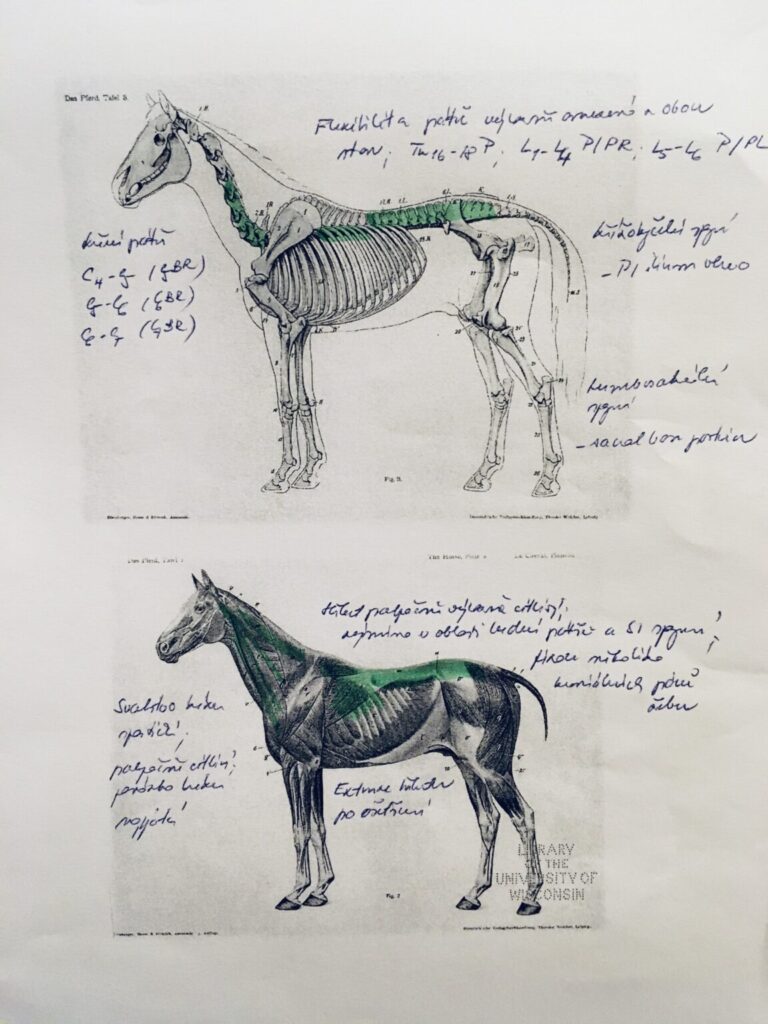
Hoof condition: The mare has very well-developed hooves including the digital cushion – exemplary. The hooves are just overgrown (flares, a hint of cracks, little bit of caudal failure). Trimming was done irregularly in the past at longer intervals (even more than 8 weeks). In 2019, the front legs were briefly shod. The hoof trim was inaccurate and led to deformations and changes in posture. The hind hooves are each different and as well the pastern axis. With regular trimming, all hooves will improve and grow into physiological state. From now on P3Trim every 4 weeks. The post monitores left hind hoof because it shows the changes in morphology clearly.
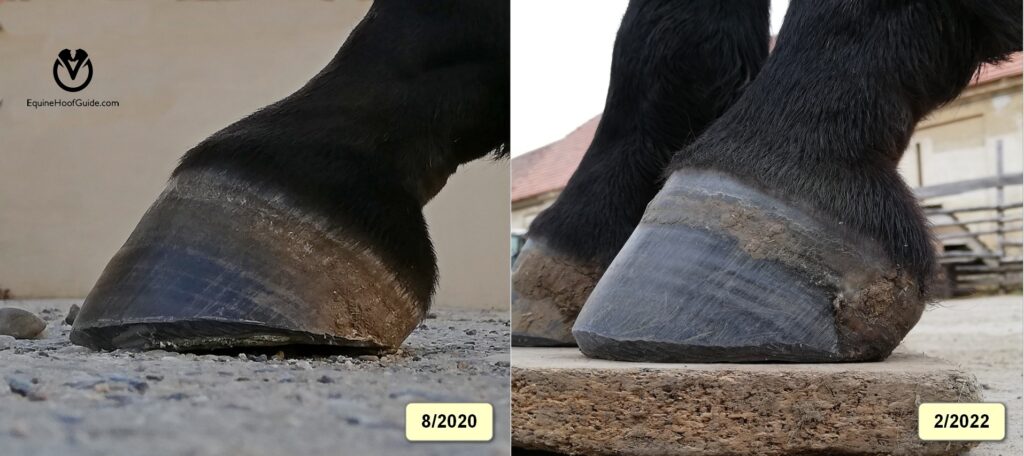

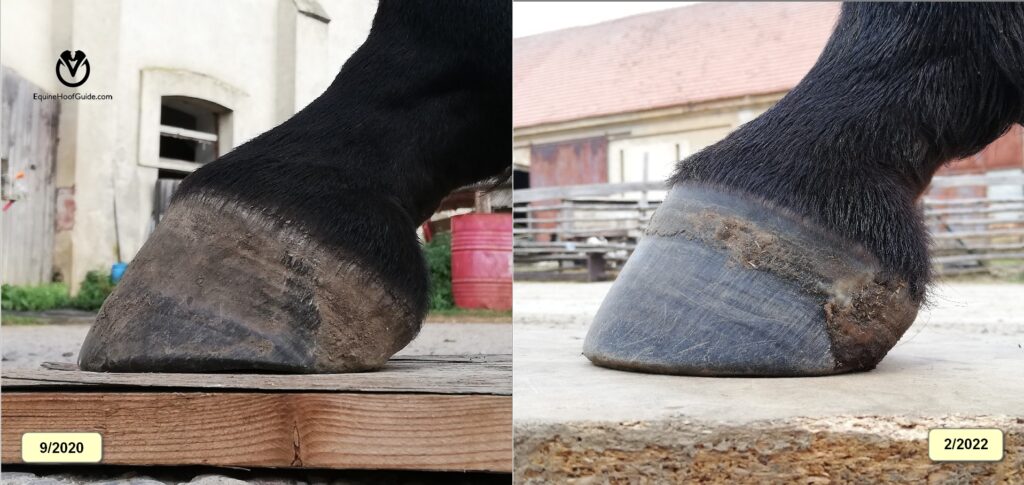
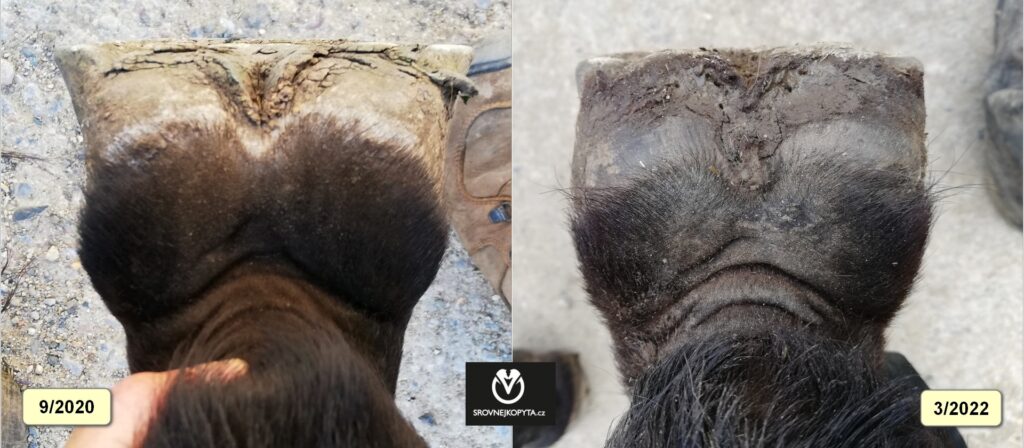
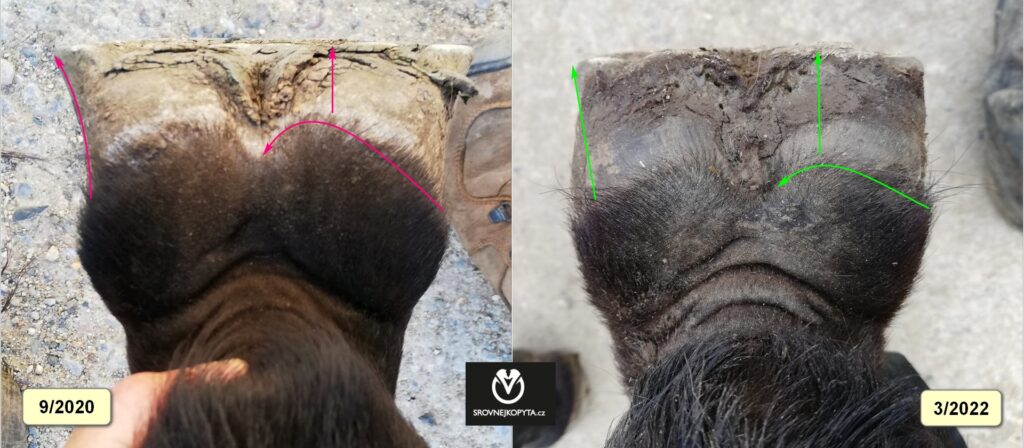
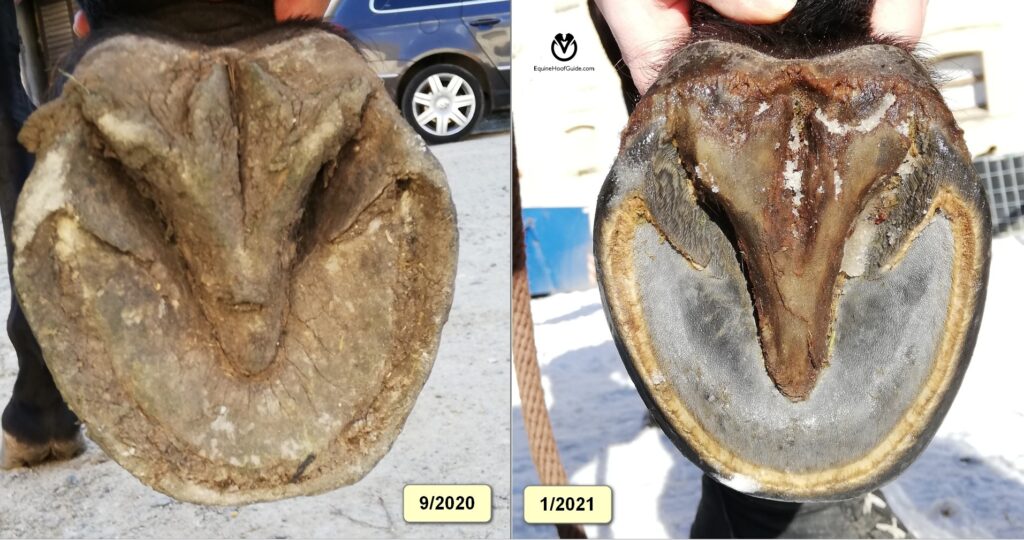
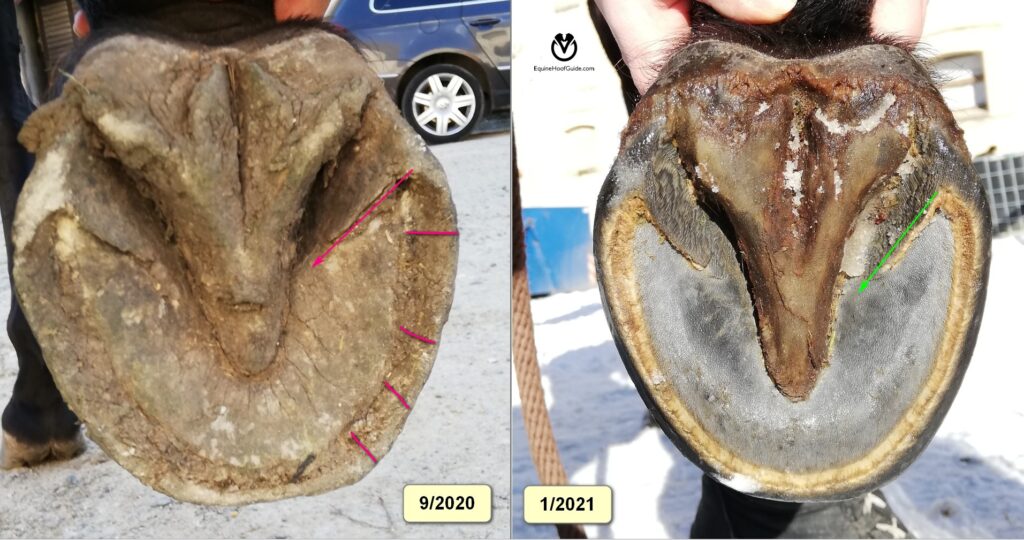
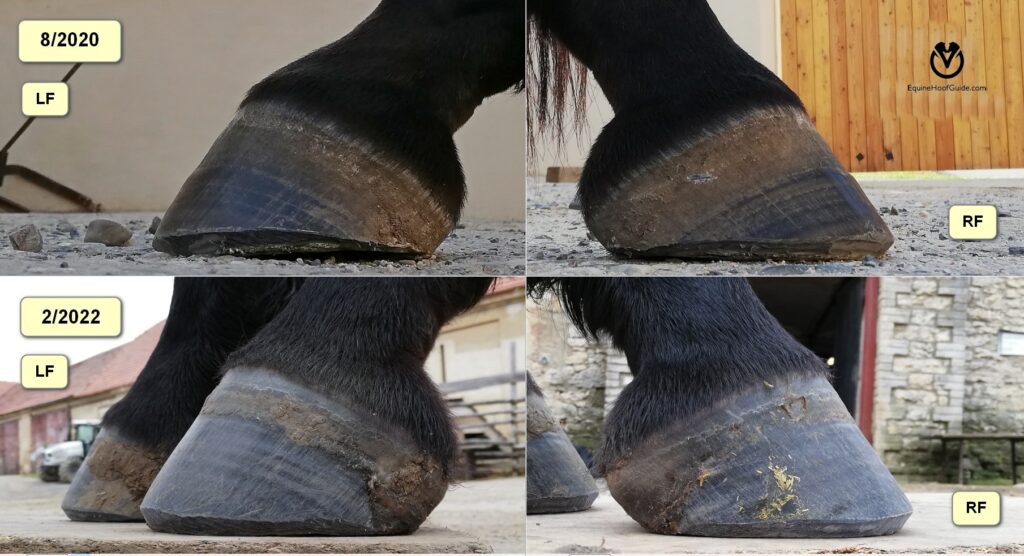
The mare used to be sensitive on stony surfaces. Now she moves very well in all gaits over various terrain including stones.